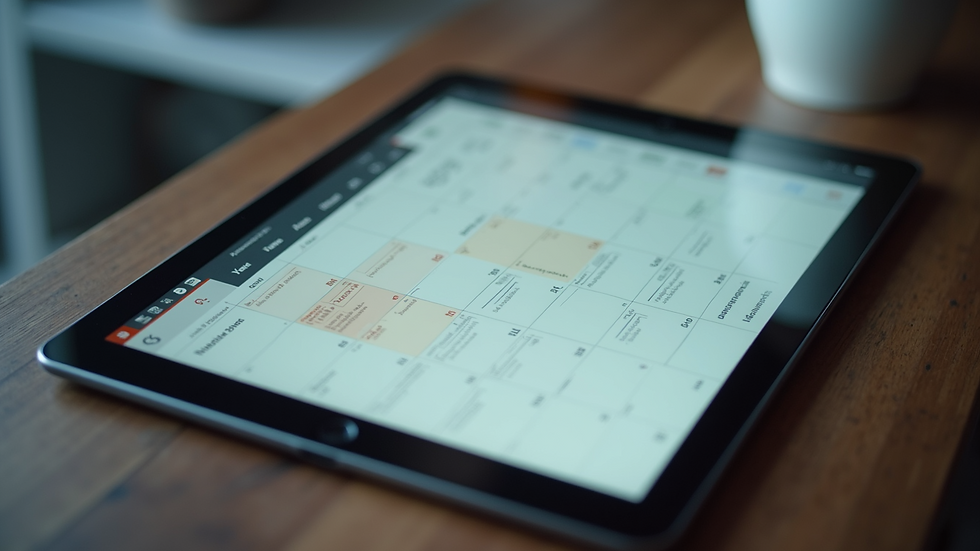Mastering Productivity in the Digital Age
- David Rocha
- Sep 29
- 3 min read
In today's fast-paced world, mastering digital productivity is essential for staying ahead. With countless apps, tools, and distractions, it can be challenging to maintain focus and efficiency. However, by adopting the right strategies and leveraging technology wisely, anyone can boost their output and achieve more in less time. This article explores practical ways to enhance your productivity using digital resources effectively.
Understanding the Importance of Digital Productivity
Digital productivity means using technology to optimize your work and personal tasks. It involves managing your time, tasks, and resources through digital tools to increase efficiency. The benefits of mastering digital productivity include:
Saving time by automating repetitive tasks.
Reducing stress through better organization.
Improving focus by minimizing distractions.
Enhancing collaboration with team members remotely.
For example, using calendar apps to schedule your day can prevent overbooking and help you allocate time for breaks and focusing on particular tasks. Similarly, task management software can prioritize your to-do list, ensuring you tackle the most important tasks first.

Strategies to Boost Digital Productivity
To maximize your digital productivity, consider implementing these strategies:
1. Prioritize Tasks Effectively
Divide your tasks into logical categories, such as:
To Do Immediately
To Do Today
To Do This Week
To Do Later
Focus on tasks that are both urgent and important first. This method helps you avoid wasting time on low-priority activities.
2. Use Time-Blocking Techniques
Allocate specific blocks of time for different activities. For instance, dedicate mornings to deep work and afternoons to meetings or emails. This approach reduces multitasking (which has been shown to be very inefficient!) and increases concentration.
3. Minimize Digital Distractions
Turn off non-essential notifications and use apps that block distracting websites during working hours. This helps maintain focus and prevents constant interruptions.
4. Leverage Automation Tools
Automate repetitive tasks such as email sorting, social media posting, or data entry. There are a number of tools that can connect different apps to streamline these workflows.
5. Regularly Review and Adjust Your Workflow
Set aside time weekly to assess your productivity methods. Identify what works and what doesn’t, then make necessary adjustments to improve efficiency.

What is digital time management?
Digital time management refers to the practice of organizing and planning how to divide your time between various digital tasks and activities. It involves using digital tools and techniques to track, schedule, and optimize your time effectively. This concept is crucial in the digital age, where distractions are abundant, and the boundaries between work and personal life often blur.
Examples of digital time management include:
Using calendar apps to schedule meetings and deadlines.
Setting reminders for important tasks.
Tracking time spent on different projects with a time-tracking software.
Employing focus apps that encourage periods of uninterrupted work.
By mastering digital time management, you can ensure that your day is structured, productive, and balanced.

Tools to Enhance Your Digital Productivity
Integrating digital time management Into Your Routine
Incorporating digital time management into your daily routine can transform how you work. Start by:
Setting clear goals for each day.
Using digital calendars to block time for focused work - and breaks!
Tracking your time to identify productivity patterns.
Adjusting your schedule based on insights gained.
This approach helps you stay organized and ensures that your digital tools serve your productivity goals rather than distract from them.
Building Habits for Long-Term Digital Productivity
Sustainable productivity comes from consistent habits. Here are some tips to build and maintain productive digital habits:
Start your day with a plan: Review your tasks and prioritize.
Limit multitasking: Focus on one task at a time for better quality work.
Take regular breaks: Regular breaks are essential to avoid burnout.
Reflect weekly: Assess what worked and what needs improvement.
Stay updated: Keep learning about new tools and methods to enhance productivity.
By embedding these habits into your routine, you create a foundation for ongoing success in the digital age. Mastering digital productivity is a journey that requires commitment and the right strategies. By understanding the importance of digital tools, managing your time effectively, and building strong habits, you can achieve more with less stress. Start small, stay consistent, and watch your productivity soar.




Comments